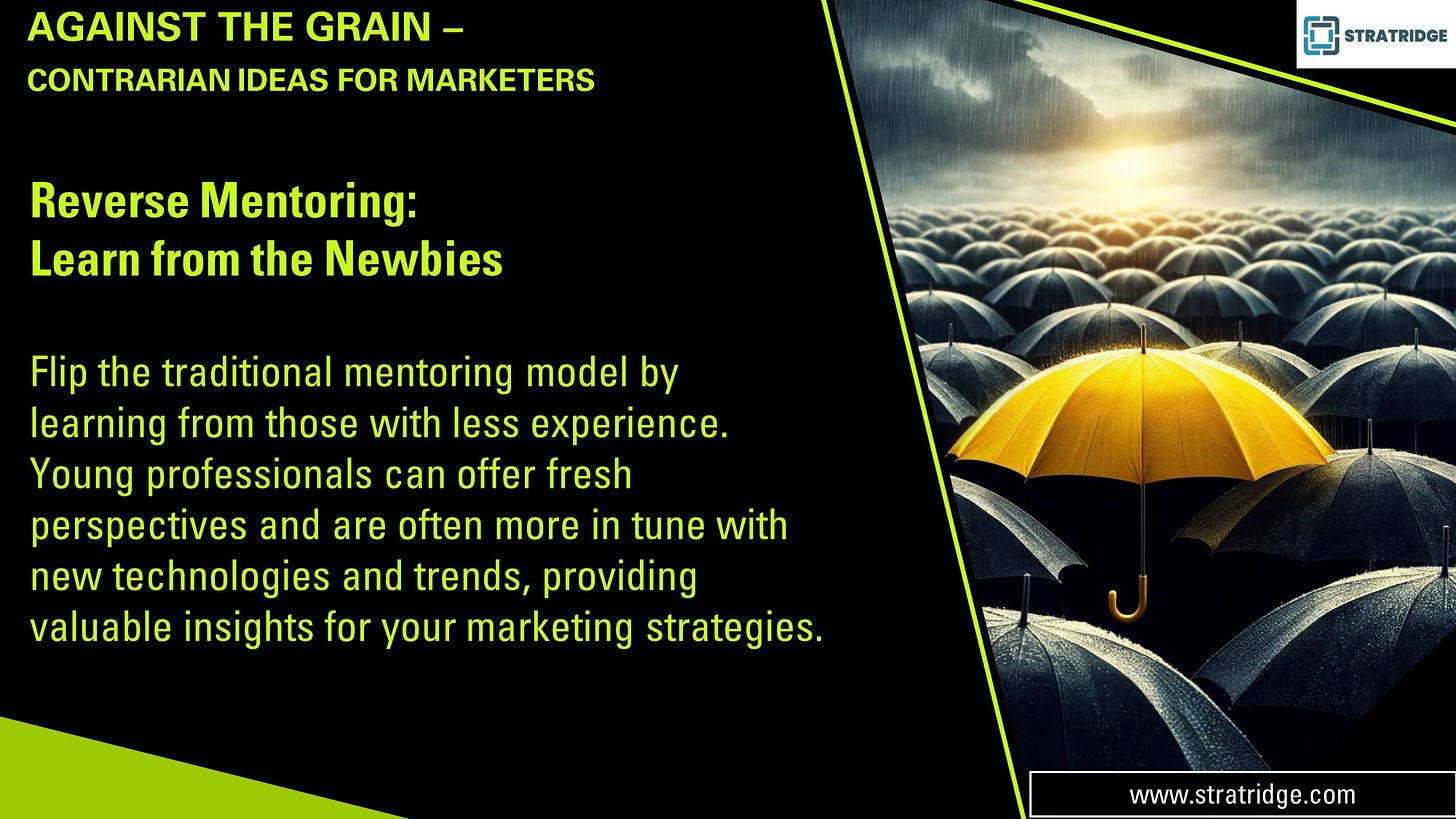Reverse Mentoring for Marketers: Harnessing Fresh Insights from the Next Generation
Staying abreast of the latest technologies, trends, and consumer behaviors is crucial in the ever-evolving marketing landscape. Traditional mentoring models often emphasize knowledge transfer from seasoned professionals to newcomers. However, in a field as dynamic as marketing, the flow of knowledge needs to be more fluid and encompass all directions. This is where reverse mentoring comes into play, particularly for marketers. By flipping the traditional mentoring model, senior marketing leaders can tap into younger professionals' fresh perspectives and tech-savvy insights. This approach fosters an inclusive workplace culture and equips companies with the tools necessary to thrive in a digital age.
Understanding Reverse Mentoring
Reverse mentoring involves junior employees or those with less experience taking on the role of mentors to their more seasoned colleagues. This concept, pioneered by former General Electric CEO Jack Welch in the late 1990s, was initially introduced to keep senior executives updated with the internet and new technologies. Today, it extends beyond technological fluency to include insights into emerging market trends, new communication styles, and innovative marketing strategies.
Why Reverse Mentoring is Crucial for Marketers
Technological Advancements: Having grown up during the digital age, young professionals bring a native understanding of current technologies and digital platforms that are vital in today's marketing strategies. They are often the first to adopt and adapt to new tools and platforms, from social media innovations to AI and data analytics technologies.
Cultural Relevance: Younger team members are typically more attuned to current cultural trends and shifts, which are crucial for creating relevant and engaging marketing content. They can provide insights into what resonates with emerging demographic segments, such as Gen Z and younger millennials.
Diverse Perspectives: New professionals bring unique viewpoints and ideas that challenge conventional wisdom and stimulate innovation within marketing teams. Their fresh perspectives can lead to breakthrough product development, branding, and customer engagement ideas.
Enhanced Collaboration and Learning Culture: Reverse mentoring can break down hierarchical organizational barriers, fostering a more collaborative and inclusive work environment. This model encourages continuous learning and knowledge sharing across all levels of the organization.
Implementing Reverse Mentoring in Marketing
Step 1: Identifying Objectives and Matching Mentors Before implementing a reverse mentoring program, it is crucial to identify specific areas where senior leaders wish to gain more insight, such as digital marketing, social media strategies, or understanding newer consumer behavior trends. Matching senior leaders with junior mentors with strengths in these areas is key.
Step 2: Structuring the Mentoring Sessions Effective reverse mentoring requires structure. Regularly scheduled sessions, clear goals for each meeting, and open communication channels help ensure that both parties benefit from the exchange. Establishing a feedback loop where mentors and mentees can also discuss what is or isn't working is important.
Step 3: Encouraging Openness and Flexibility Senior participants must be open to learning and willing to adapt based on the insights shared by their junior counterparts. Flexibility in implementing new ideas and strategies is essential for the reverse mentoring program's success.
Step 4: Monitoring Progress and Impact Like any initiative, the impact of reverse mentoring should be monitored and evaluated. Key performance indicators might include the implementation rate of new ideas, improvements in digital marketing metrics, and overall team satisfaction and collaboration levels.
Challenges and Considerations
While reverse mentoring offers numerous benefits, it also presents challenges. These include overcoming generational biases, ensuring that senior leaders genuinely value and respect the insights of younger mentors, and maintaining a balance so that the career development needs of the younger employees are also met.
Reverse mentoring flips the traditional knowledge transfer model to leverage younger employees' unique insights and skills, which is particularly beneficial in the fast-paced marketing field. By fostering an environment where knowledge flows both ways, companies can stay ahead of technological trends, remain culturally relevant, and nurture a more dynamic and innovative workplace. For marketing leaders, embracing this approach enhances their strategies and signals a commitment to fostering a truly collaborative and forward-thinking organization.


